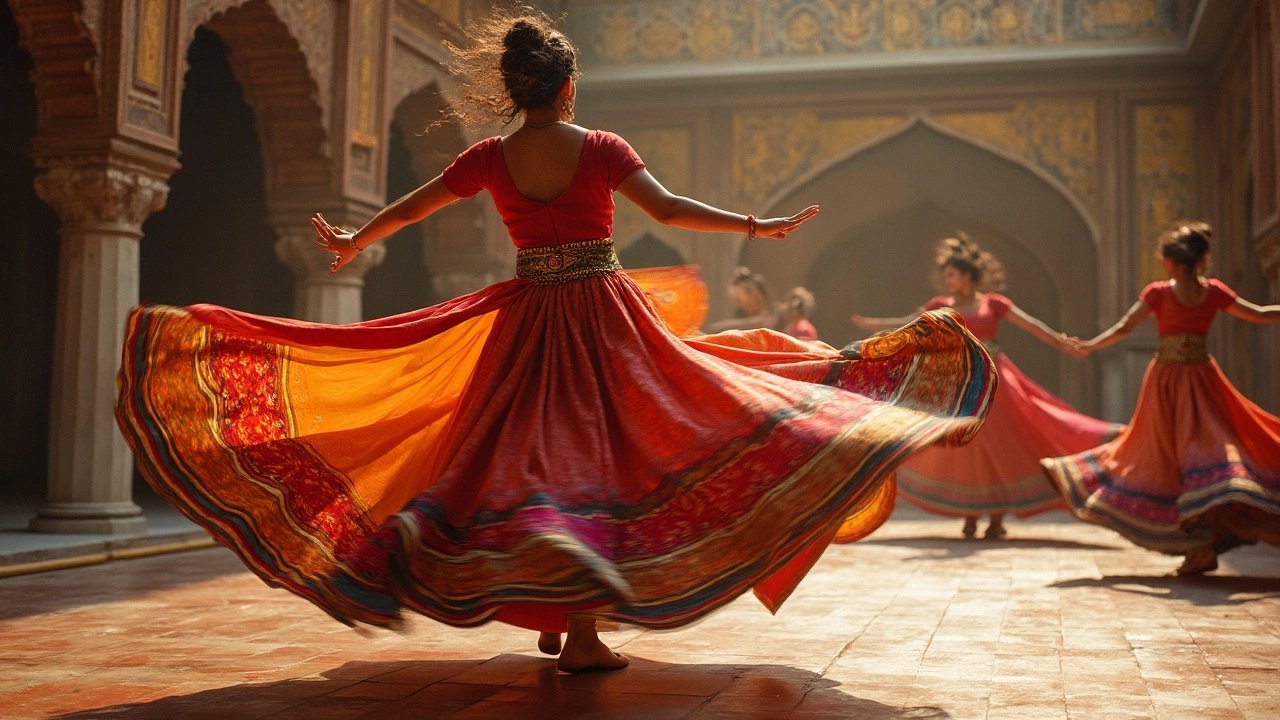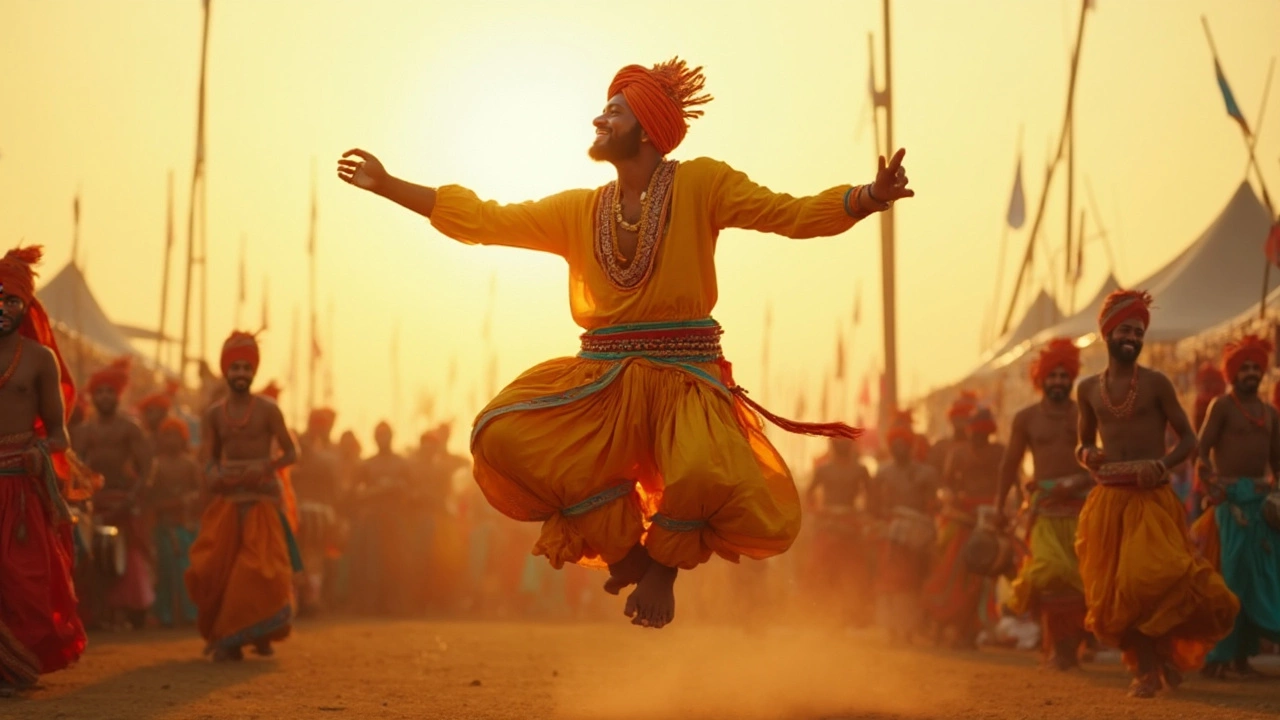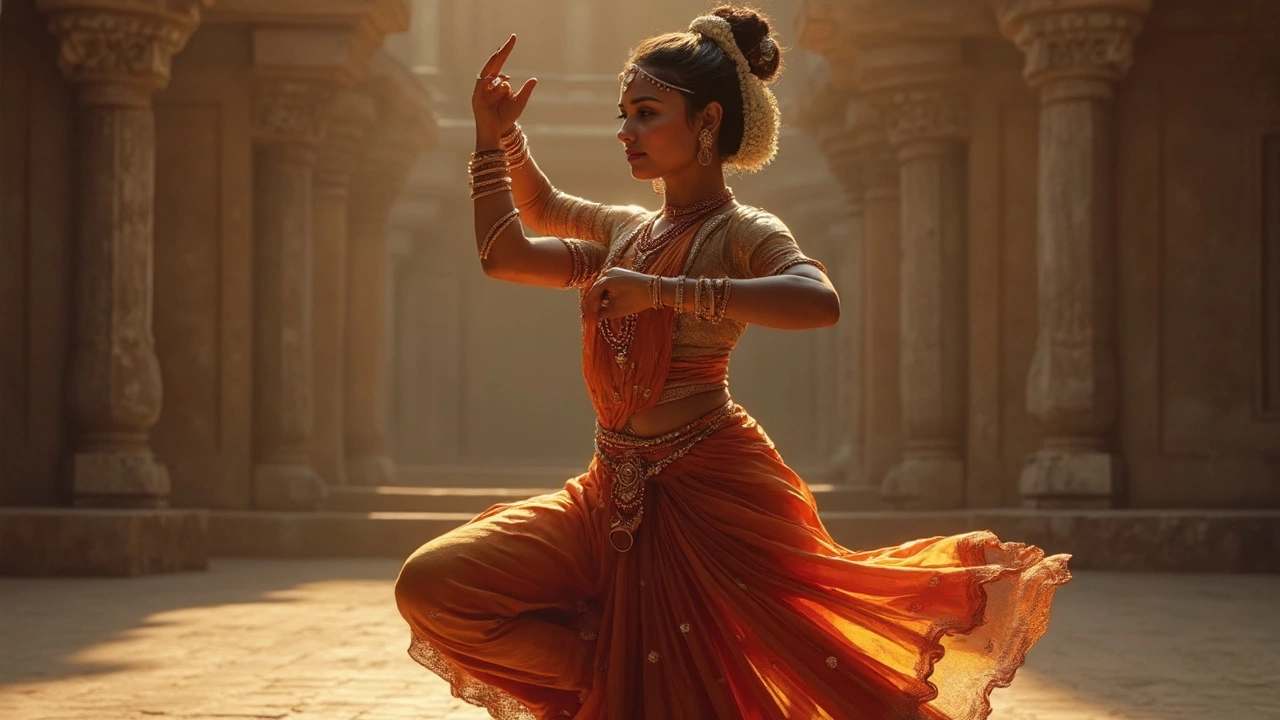Dance is such a cool blend of art and physical ability, but let's be real—some styles are just brutal on the body. Imagine having to nail complicated moves while telling a story or conveying deep emotions. We're diving into what makes a dance ‘hard’ and why they’re more than just steps and rhythms.
Let's kick off with an obvious titan: ballet. Often seen as the foundation of dance, it asks so much from your body—think about balance, flexibility, and strength. You've got to make it look effortless while battling blisters and muscle aches. Tough stuff, huh?
- Defining Difficulty in Dance
- Ballet: The Global Tough Nut
- Flamenco: Passion Meets Precision
- Kathak: The Storytelling Mastery
- Your Path to Mastering Tough Dances
Defining Difficulty in Dance
When talking about what makes one dance tougher than another, we're really looking at a mix of factors. It’s not just about who can jump the highest or spin the fastest. There's technique, endurance, rhythm, and let’s not forget the mental game.
Technique and Precision
Different dance styles have their own set of rules and technical requirements. Take ballet, for example. It’s like the gold standard in terms of precise movements—every single step, each turn, has to be spot-on. There’s a reason why seasoned ballet dancers practice their pliés and arabesques for hours.
Endurance and Physical Demand
Endurance is another biggie. Styles like flamenco demand stamina. Ever tried keeping up with the fast-paced footwork while maintaining the dramatic flair flamenco is famous for? It’s no cakewalk. Your legs and core will be on fire after just one session.
Here's a look at some physical demands across various styles:
| Dance Style | Average Calories Burned (30 mins) |
|---|---|
| Ballet | 200-250 |
| Flamenco | 150-200 |
| Kathak | 180-230 |
Rhythm and Musicality
Then there’s rhythm. Dances with complex beats like regional dance forms such as Kathak require not just moving to the beat but becoming one with it. It includes understanding the very soul of the music you're dancing to.
Mental Agility and Focus
Don’t underestimate the mental agility required. With styles that incorporate storytelling, like Kathak, you need to keep track of time, steps, and storylines all at once. Basically, being a human multitasker!
In a nutshell, the hardest dance style for you might boil down to your strengths and weaknesses across these different factors. So, if you're up for a challenge, find a style that pushes you beyond what you think you're capable of. Happy dancing!
Ballet: The Global Tough Nut
When it comes to tough dance styles, *ballet* is often the first that springs to mind. It’s demanding, both physically and mentally. Ballet isn’t just about looking graceful; it's about razor-sharp precision and intense discipline. Dancers spend hours making sure that every inch of their moves is perfect, from pointed toes to arm placement.
The Physical Toll
Did you know that ballet is notoriously punishing on the body? Yup, genuine. All those pirouettes and leaps demand strong, flexible muscles. You're basically putting your joints and tendons through a workout that’s as intense as some sports. So it’s no surprise ballet dancers train like athletes. They often deal with things like stress fractures, strained muscles, and yes, those painful pointe shoe blisters.
| Common Ballet Injuries | Details |
|---|---|
| Stress Fractures | Usually in the feet and lower legs due to repetitive motion |
| Achilles Tendonitis | Inflammation from excessive pointing or jumping |
| Blisters | Commonly caused by pointe shoes |
The Mental Challenge
Ballet is not only about physical strength. It’s mentally taxing too. Memorizing choreography isn’t just remembering steps; it requires an understanding of the music and story. Plus, you’re doing this with a smile, making it look as natural as breathing.
Why People Love It
For all its challenges, dancers love ballet because it’s rewarding. Nailing a complex routine can feel like you’ve conquered the world. Every pirouette perfected is a small victory. Plus, it lays a solid foundation for exploring other dance styles. Many pro dancers claim that the skills learned in ballet help them pick up other dances with ease.
So, while ballet may be a tough nut to crack, the dedication and grit it requires can be pretty fulfilling for those who stick with it. Plus, mastering such a demanding dance form definitely earns you some major bragging rights!

Flamenco: Passion Meets Precision
Flamenco is not just a dance, it's an intense experience, and Spain is where its heart beats strongest. This style is famous for its emotional depth and technical demands, making it hard to master. You might think of it as just stomping feet, but the real challenge lies in the precise rhythms and expressive storytelling.
Understanding Flamenco's Complexity
Flamenco combines dance, music, and song. It’s not enough just to move; you have to feel and express the music deeply. The dance form is divided into several regional dance styles, each with its unique rhythm, called a 'palo.' Knowing the nuances of each palo, like Soleá or Bulerías, is key.
On top of that, Flamenco features intricate footwork called 'zapateado.' This requires not just speed but also perfect timing to match the beats. Many start off with basic steps, but to truly excel, you need to practice endlessly to match the musicians and singers.
Body and Emotion in Sync
One of Flamenco's toughest aspects is its demand for emotional honesty. You can't fake the passion. The hand movements or 'braceo' need to flow from the heart, while 'compás,' or rhythm, ties everything together into a seamless performance.
Getting Started with Flamenco
Eager to try your hand? Here are a few tips:
- Take a class: Guided instruction is priceless for learning the basics.
- Watch professionals: Observing seasoned Flamenco artists helps understand the emotional depth required.
- Practice your rhythm: Spend time clapping 'palmas' to understand the compás better.
Flamenco is a test of endurance and spirit, so be patient. The hardest dance styles aren't learned overnight. Whether you end up performing or simply enjoying the art form, Flamenco has a way of touching souls. If you're thinking of mastering this passionate dance style, remember that true dedication pays off with unforgettable performances.
Kathak: The Storytelling Mastery
Let's talk about Kathak—a dance form that's all about storytelling with your feet, hands, and eyes. Originating from North India, it's not just dance; it's like a history lesson and a concert rolled into one. You'll see dancers narrating epic tales while pulling off seriously intricate footwork. It's mentally and physically demanding.
Historical Roots and Evolution
Kathak has roots stretching back to ancient temples, where dancers spun stories of gods and goddesses. Over time, it evolved with influences from Persian culture, especially during the Mughal era. This blend of imaginative storytelling and graceful movements makes it unique among regional dance forms today.
Technique and Nuances
Mastering Kathak requires precision with complex footwork; think tapping out rhythms while twirling in circles. You'll see dancers wearing ankle bells, called 'ghungroos,' which aren't just for show. They amplify every movement, ensuring the audience hears every shift in rhythm. It's a killer combination of timing and balance, especially when everything needs to sync perfectly.
Facial expressions—'abhinaya'—are crucial too. Dancers use them to convey emotions and character roles, adding layers to the storytelling. This isn't just dancing: it's like playing a role in a live drama.
Why It's Tough
Think Kathak is just about fancy footwork? Wrong! It demands an acute sense of rhythm and timing because missing a beat can throw the entire performance off. Plus, remembering complex sequences while appearing graceful is quite the challenge.
It's not surprising that dancers often spend years honing just one aspect before combining everything seamlessly in a narrative performance.
| Element | Description |
|---|---|
| Footwork | Complex and rhythm-heavy, involves ankle bells |
| Storytelling | Expressive hand gestures and facial expressions |
| Emotional depth | Requires deep understanding of themes and characters |
So if you're considering taking up Kathak, get ready for a full-body workout and a mental game. It's challenging, but it brings unmatched joy once you start feeling the rhythm in your bones. And let's not forget, it's one of those dance experiences that genuinely connects you to its rich history and vibrant culture.

Your Path to Mastering Tough Dances
Diving into the world of regional dance styles that are notorious for their complexity can seem daunting. But don't worry, it’s totally possible with the right approach and mindset.
Start with the Basics
No matter if it's flamenco or ballet, you gotta know the fundamentals before jumping into the fancy stuff. Get comfortable with the basic steps and positions. Many dance schools recommend dedicating at least three months to master initial steps before moving up a level.
Listen to the Music
Understanding the rhythm and mood of the music is crucial in tough dance styles. Spend time just listening and maybe tapping your feet to get in sync. This not only helps with timing but also makes dancing a lot more fun.
Practice Regularly
Consistency is key. Aim for at least 30 minutes a day if you can spare it. It might seem like a drag, but this routine will make complex moves second nature.
Seek Feedback
Ever thought about filming yourself and seeing what vibes you give off? Another good way is to ask a friend or instructor to watch you. Constructive feedback is gold when you're trying to nail those tricky parts, especially in dance challenge levels.
Stay Physically Fit
Challenging dance routines demand stamina. Keep your body in top shape with cardio exercises like swimming or jogging. Flexibility exercises will also help you avoid injury.
Set Realistic Goals
Don’t expect to be a pro overnight. Set small, achievable goals, like learning a new step each week. It keeps you motivated and makes progress measurable.
Some folks might find it helpful to join online forums or local dance groups for tips and moral support. There are always people at your level who you can bond with over shared struggles and victories.
